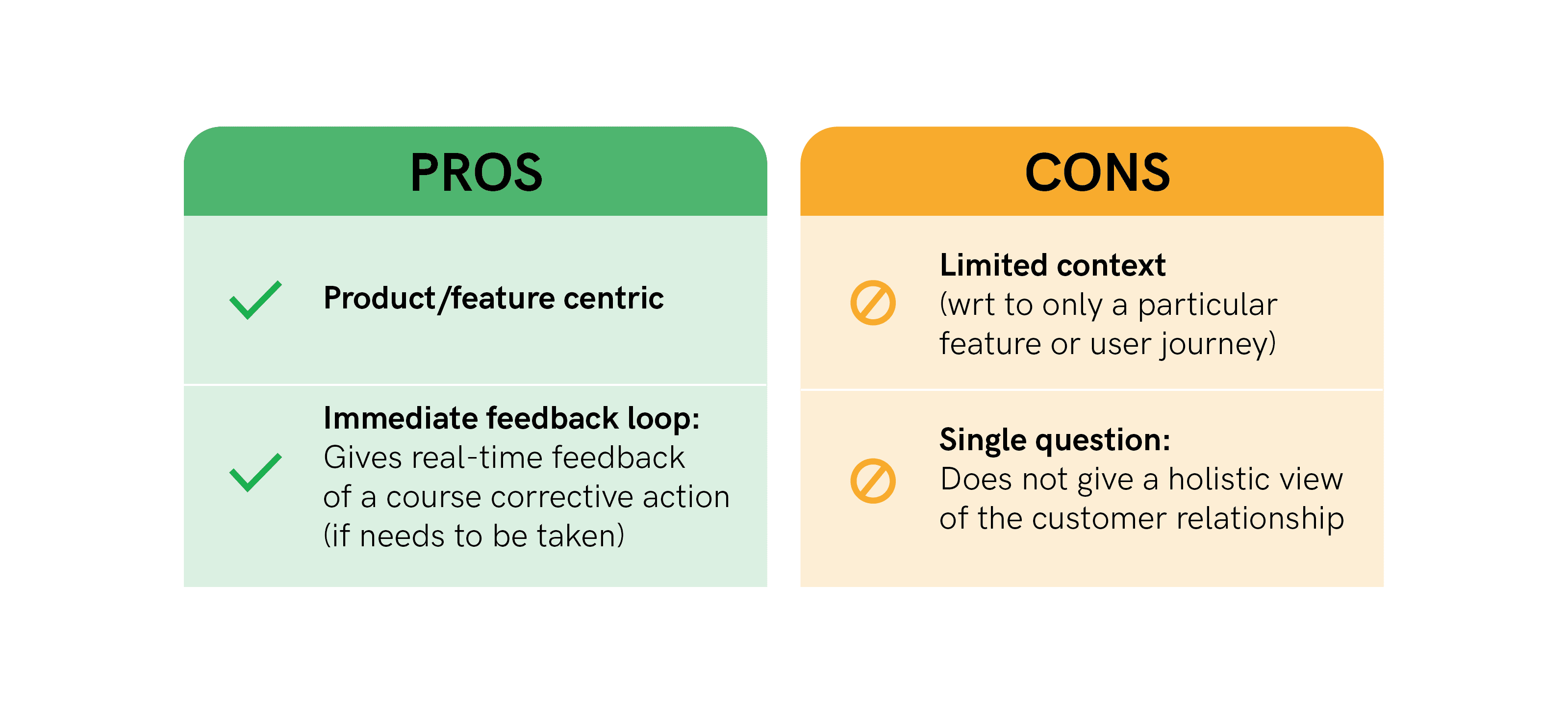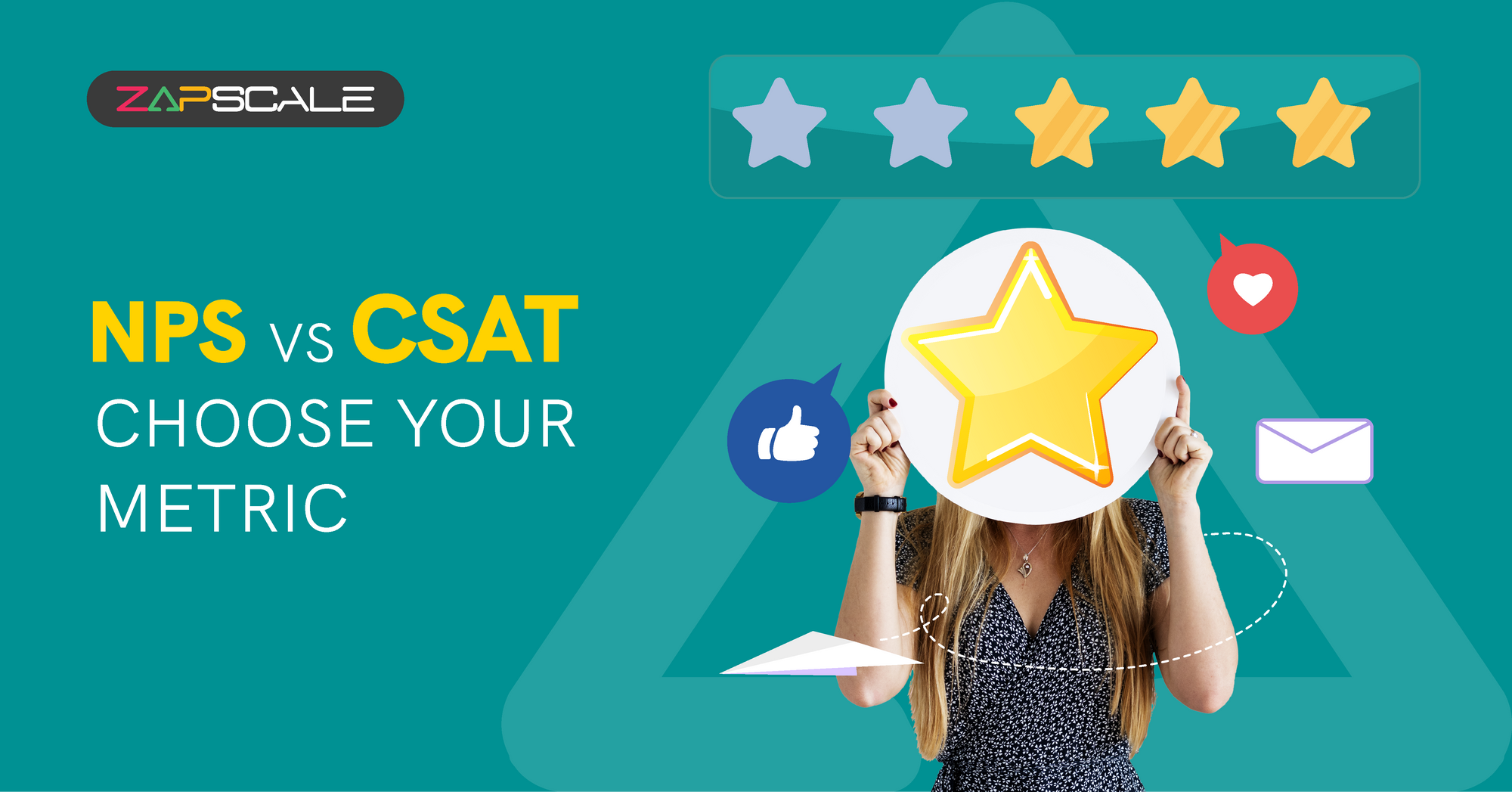CATEGORY > CS Metrics
What is Customer Effort Score? How does it compare with CSAT and NPS?

Continuing from where we left off talking about important CS metrics in our previous article, let’s dive a little into this one particular metric - the Customer Effort Score (CES) to know how it showcases a realistic picture of product adoption and customer satisfaction.
What Is A Customer Effort Score?
Customer Effort Score (CES) measures the ease with which customers can achieve their goals when interacting with a product or a platform. It is also assessed through a survey asking customers how easy or difficult it was to accomplish a specific task. Responses are often on a scale, and the average score is provided by the CES. Lower scores indicate higher ease.
In Customer Success, a Customer Effort Score is utilized to identify friction points in the customer journey.
Difference Between CES, CSAT, and NPS
NPS or Net Promoter Score is a metric that measures the likelihood of customers recommending a company's product or service to others. It provides insights into overall customer satisfaction and loyalty.
CSAT or Customer Satisfaction Score measures how satisfied customers are with a product, service, or interaction.
How these 3 metrics primarily differ is based on:
- User Journey: Where the customer is in their adoption journey of the tool/platform/product
- Interaction with the platform: With respect to ease of navigation and emphasis on how the UI/UX(User interaction/User Experience) is given importance.
- Recommendation Scale: With respect to suggesting their experience and being advocates, whether internal or external.

When Should You Use A Customer Effort Score?
As mentioned above, the CES focuses more on how a product feature is built and deployed. This can be particularly useful when a new feature or product update is being pushed to the platform.
We’ve spoken about in-depth discovery and feedback sessions to engage your customers with and this is the point where you can gain the assurance of your customer that you are listening. This is a subtle yet effective way to build a rapport with your accounts.
A CES is helpful to evaluate:
- The effectiveness of a portal/product for self-service i.e. how easily is a customer able to self-navigate to what they came online for?
- Online Customer Onboarding i.e self-driven via pop-ups/guided tours
- Customer Journey Mapping i.e. understanding heat maps of where the customer spends the most time. For example, your product or website etc.
Common CES survey questions
The best way to understand CES is if you have ever visited a Decathlon store and how you are guided to an emoticon-based survey after your store experience. It’s the easiest way to understand CES.
Some typical questions to measure CES include:
- How easy was it for you to find what you were looking for?
- How much time did it take to get to your resolution by yourself?
- Was X member from the support team responsive to your query?
- How would you rate your interaction/experience on the tool today?
How To Calculate Customer Effort Score (CES)?
A CES scale usually ranges from 1(difficult) to 7 (easy). Responses to questions as mentioned above are collected from a survey audience. This can be collected at regular pre-defined time intervals, after using a particular feature or completing a task.
Once the responses are collected, the formula is straightforward:
What Is A Good Customer Effort Score?
A good customer effort score falls between 1 and 3 on a scale of 7-point scale, where 1 indicates the lowest effort and 7 indicates the highest effort.
This means that customers find it relatively easy to get their issues resolved and interact with the company.
The exact benchmark for a good CES can vary by industry and company, but generally, a lower score means that the customer experienced less difficulty, which is associated with higher satisfaction and loyalty.
Advantages and Disadvantages of Customer Effort Score (CES)?
CES cannot be used in isolation but must be seen in tandem with other metrics like CSAT/NPS. There are some pros and cons one should be aware of while implementing the Customer Effort Score evaluation.

Conclusion
It’s fair to say the CES, while it drives to understand one part of the customer relationship, it is important that if you measure it in regular intervals with a process for new features/user journeys etc then you can rely on it to decide the way forward. If you think you need to see the score along with CSAT and NPS, then the strategic impacts would differ and that’s a different road you’d be on.
Depending on what industry, who is your audience, and what is your product is a good way to lead these discussions around the metrics and finalize on what works best for your product.
To know more about how you can understand different customer success metrics, you can read here.
FAQs
1. Why is CES important?
CES is important because it helps identify friction points in customer interactions. Reducing effort can lead to higher customer satisfaction, increased customer loyalty, and better overall customer experience.
2. How is the customer effort score measured?
CES is measured through a survey asking customers to rate their experience on a scale of 1 to 7 in which a 1 is considered as a good score whereas in 7 is considered as the worst. 1 signifies that the customer had an overall good experience with the company while interacting with them and 7 tells you that it took a great deal of effort for a customer to solve their issues.
3. What are the benefits of using the customer effort score?
Customer effort score is a metric that provides actionable feedback, improves customer loyalty by reducing effort, enhances the overall experience of the customer, and offers timely insights for quick improvement in processes and support.
ABOUT THE AUTHOR
Popular from CS Metrics
Quality Content,
Straight To Your Inbox!
Subscribe for the latest blogs, podcasts, webinars, and events!

Write a Blog
If you have experience in CS and
a flair for writing, we’d love to
feature you.
Write to us on
hello@zapscale.com





